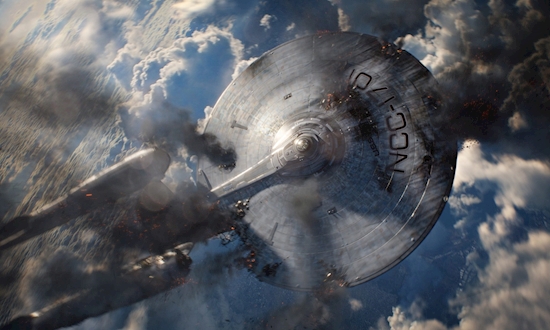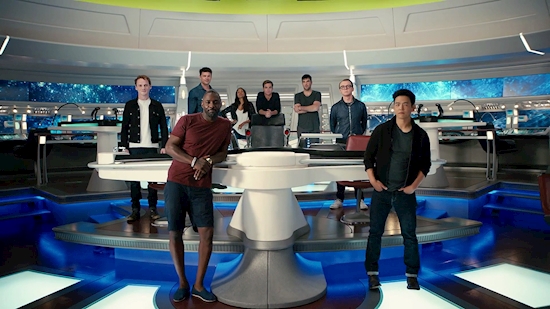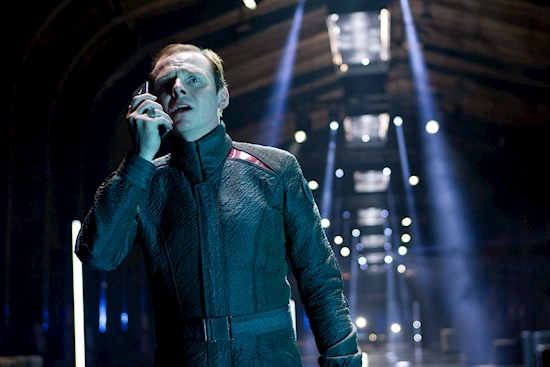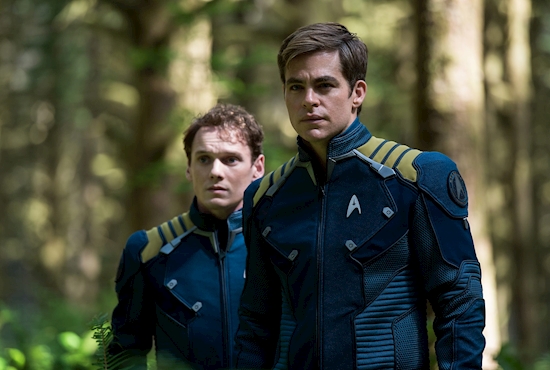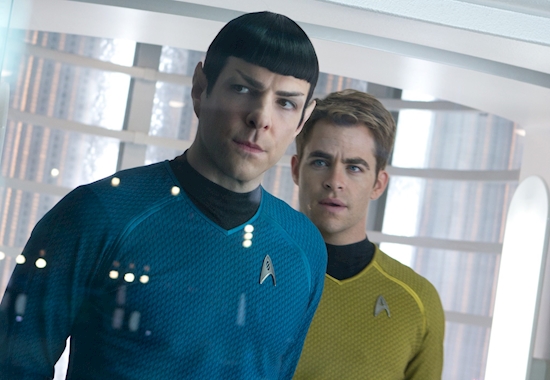Nick Flicks | 5 reasons Star Trek is moving in the right direction
It feels like there are two kinds of people in the world: people that love the rebooted Star Trek series and purists that will always stand by the original classics. Granted, the older Star Trek films and TV shows will always be in a league of their own. The Wrath of Khan in particular will likely forever standout as the best Star Trek movie ever. As much as diehard Trekkers might deny it, though, the reboot films have all been exceptional in their own right. With the release of Star Trek Beyond, let’s take a look at five reasons why this franchise is moving in the right direction.
Better Action
Action wasn’t exactly Star Treks‘ strongest suit when it hit television in 1966. Part of this was because the show’s budget was virtually nonexistent. So you can imagine why there was a lot more dialog and less extravagant set pieces. Even when Star Trek first made the leap to the big screen, though, the action was kept to a bare minimum. In some respects, it was the opposite of Star Wars, which had more spectacle and flashy special effects. Fans often say that Star Trek is like classical music where Star Wars is like rock n roll. Seeing how director J.J. Abrams was always more of a Star Wars guy, it wasn’t at all surprising that he upped the action in his 2009 reboot and 2013’s Star Trek Into Darkness.
On the one hand, you could argue that Abrams dumbed-down Star Trek by taking the blockbuster route. It’s hard to complain, however, when the action is so phenomenally well done. Both of Abrams’ Star Trek films were wall-to-wall with stellar set pieces that ranged from creative, to enthralling, to heartbreaking. Director Justin Lin continues this tradition in Star Trek Beyond, which features some of the most dazzling action sequences the franchise has ever seen.
Characters Continue to Grow
As thrilling as the more recent Star Trek films have been, the action admittedly wouldn’t matter without compelling characters. Fortunately, all three of these movies do right by the USS Enterprise crew. Filling William Shatner and Leonard Nimoy’s shoes is no easy task, but the new cast has yet to hit a false note. When we see Zachary Quinto on screen, we don’t see an actor impersonating Mr. Spock. We just see Mr. Spock. The same goes for Chris Pine’s Captain Kirk, Zoe Saldana’s Uhura, Karl Urban’s Bones, Simon Pegg’s Scotty, John Cho’s Sulu, and the late Anton Yelchin’s Chekov.
All of these actors capture the spirit of these immortal characters while also making the roles their own. It also helps that they’ve been given three clever, inventive scripts, which continue to explore new character dynamics and ideas. Star Trek Beyond is an especially strong ensemble piece, giving every major player the time to shine. The filmmakers understand that times might change, but timeless characters will forever remain the same at heart.
Stronger Humor
Just as the action and visuals have vastly improved, Star Trek has gotten much better in the humor department. That’s not to say the original films were totally humorless, but it’s safe to say that they were mostly played with a straight face. This would be alright if it weren’t for the fact that Star Trek has gone to some pretty silly places over the years. Anybody remember the time Captain Kirk switched bodies with an insane woman? It was more than welcome when Abrams injected some much needed comedy into the equation, but he never went too far like George Lucas did with Jar Jar Binks.
The humor all stems from the characters and how they play off each other. Star Trek Beyond most notably excels on comedic level thanks to co-writer Simon Pegg, who also plays Scotty in the film. As many of us know, Pegg has written some of the funniest films of the past decade and a half, i.e. Shaun of the Dead and Hot Fuzz. He’s also a longtime Star Trek fan, possessing vast knowledge of the series. As a result, Pegg knows exactly when to incorporate a one-liner or in-joke that doesn’t feel forced or out of character.
Little Cinematic Universe Building
One of the problems with numerous modern franchises is they focus too heavily on building a universe instead of focusing on the story at hand. Batman v Superman felt more like a preview for future DC films as apposed to the superhero showdown people wanted. Even cinematic universes that know what they’re doing for the most part, such as the MCU, at times get bogged down by packing in too much. That hasn’t been the case with the Star Trek reboot series, however.
While certain plotlines and character arks do carry over between films, the franchise has mostly felt episodic. Star Trek Beyond is essentially a standalone adventure that doesn’t require people to see the previous two films. Some people might be disappointed that the latest film doesn’t really continue an ongoing story. Unlike so many universe-building blockbusters, though, Star Trek Beyond knows how to stay focused, which ultimately benefits the narrative.
It Still Feels Like Star Trek
Sure, Star Trek has undergone some changes over the years with more explosions and space battles. People forget, however, that this franchise has always been about evolution and reaching new frontiers. The reboot films have succeeded in making Star Trek more accessible for mainstream audiences without betraying Gene Rodddenberry’s initial concept. At its core, Star Trek is still about characters, ideas, and boldly going where to no man has gone before. After 50 years, this series is showing no sign of slowing down and we have kickass movies like Star Trek Beyond to thank for that.
For more on Star Trek Beyond, be sure to read our review of the film here.
1Source: www.flickreel.com

